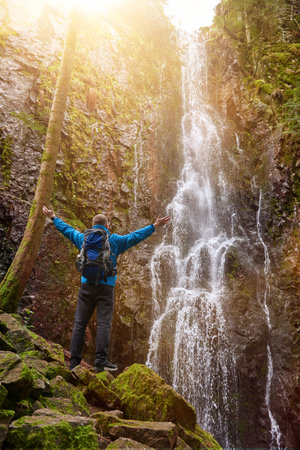1. Introduction: Day Hiking vs. Backpacking Essentials
Whether you’re planning a quick morning trek or gearing up for a multi-day adventure in the backcountry, knowing what to pack can make or break your outdoor experience. The gear you need for a short day hike is quite different from what you’ll require on a longer backpacking trip. Let’s break down these differences and help you prepare for a safe and enjoyable outing.
Understanding the Key Differences
The main factors that influence your packing list are trip length, trail conditions, and safety needs. Here’s how they compare:
| Factor | Day Hiking | Backpacking |
|---|---|---|
| Trip Length | A few hours to one day | Multiple days/nights |
| Packing Style | Lightweight, small daypack | Larger backpack with overnight gear |
| Shelter Needs | None (unless emergency) | Tent, tarp, or hammock required |
| Food & Water | Snacks & 1-2 water bottles/bladder | Full meals, snacks, water filter/purifier |
| Clothing | Weather-appropriate layers, rain jacket | Extra clothes for changing weather & nights out |
| Safety Gear | Basic first aid, navigation tools (map/compass/GPS) | Comprehensive first aid kit, satellite communicator recommended in remote areas |
| Comfort Items | Sunscreen, bug spray, hat/sunglasses | Camp stove, sleeping bag/pad, toiletries, extra comfort items for longer stays |
Packing for Different Trail Conditions and Safety Considerations
If you’re hiking well-marked local trails near town, your risk level is low and you can pack light. But if you’re venturing into rugged terrain or the wilderness—especially overnight—you’ll need more food, water treatment options, shelter, and advanced navigation tools. Weather changes quickly in the mountains, so always check forecasts and pack accordingly no matter how long your trip is.
The right gear keeps you comfortable and safe. In the next sections, we’ll dive deeper into specific packing lists tailored for both day hikes and backpacking adventures.
2. Day Hiking Gear Checklist
What to Bring for a U.S. Day Hike
Heading out for a day hike in the U.S. is a fun adventure, but being prepared can make all the difference. Here’s a breakdown of must-have items to keep you safe and comfortable on the trail.
Essential Gear List
| Item | Why You Need It |
|---|---|
| Water (at least 2 liters) | Staying hydrated is key, especially in hot or dry climates. |
| Snacks/Energy Food | Pack high-energy snacks like granola bars, trail mix, or jerky for fuel. |
| Navigation Tools | A map, compass, or GPS (your phone works if you have offline maps). |
| Weather-Appropriate Clothing Layers | Dress in layers to adapt to changing temps; bring a rain jacket just in case. |
| Comfortable Footwear | Sturdy hiking boots or trail shoes help prevent blisters and injuries. |
| First-Aid Kit | Packed with bandages, antiseptic wipes, and any personal meds. |
| Sun Protection | Sunscreen, sunglasses, and a hat shield you from harsh UV rays. |
| Headlamp or Flashlight | If you get delayed, you’ll need light to find your way back safely. |
| Multi-tool or Pocket Knife | Handy for small repairs or emergencies on the go. |
| Trekking Poles (optional) | Add stability on uneven trails or steep slopes. |
| Emergency Whistle | A loud whistle can help rescuers find you if needed. |
| Small Trash Bag | Pack out your trash to keep trails clean (“Leave No Trace”). |
Packing Tips for American Trails
- Check the weather forecast: U.S. weather can change fast—bring an extra layer just in case.
- Know your trail: Download offline maps if you’re heading somewhere remote where cell service might drop out.
- Start early: Give yourself plenty of daylight hours to finish your hike safely.
Your Backpack: Keep It Light!
A good rule of thumb: only bring what you’ll really use. For most U.S. day hikes, a 15–25 liter backpack is perfect for carrying all your essentials without weighing you down. With this checklist, you’ll be ready to hit the trail with confidence!
![]()
3. Backpacking Gear Checklist
Backpacking trips in the U.S. are all about being prepared for more than just a day on the trail. Whether you’re spending a single night or heading out for several days, your gear list needs to cover shelter, sleeping, food prep, extra clothes, and some special tools. Here’s a handy checklist to help you get ready for your next overnight adventure.
Shelter & Sleeping System
| Item | Why You Need It |
|---|---|
| Tent (with stakes & guylines) | Protection from weather and bugs |
| Sleeping bag (appropriate temp rating) | Stays warm at night; check local temps |
| Sleeping pad or air mattress | Adds comfort and insulation from ground |
| Pillow or stuff sack filled with clothes | Better sleep support |
| Ground tarp or footprint (optional) | Protects tent bottom from wear and moisture |
Food Prep & Water
| Item | Why You Need It |
|---|---|
| Backpacking stove (fuel + lighter/matches) | Cook hot meals, boil water safely |
| Cookware (pot/pan, utensils) | Prepare and eat your food easily |
| Reusable mug/bowl/spork set | Eco-friendly eating and drinking gear |
| Bearing canister or food bag + rope (where needed) | Keep food safe from wildlife—required in many U.S. parks! |
| Water filter or purifier + backup tablets/drops | Make sure any water source is safe to drink from |
| Extra water bottles/hydration reservoir (2+ liters recommended) | Avoid dehydration on long hikes between sources |
| Trash bag (pack it out!) | Leave No Trace—carry out all garbage, including food scraps and packaging |
Clothing & Footwear: Layer Up!
| Item | Why You Need It |
|---|---|
| Synthetic/wool base layers (top & bottom) | Makes it easy to stay dry and warm—cotton is not recommended! |
| Puffy jacket or fleece mid-layer | Keeps you warm during chilly mornings/nights |
| Rain jacket & rain pants | Nobody likes being soaked—weather changes fast in the backcountry |
| Hiking pants/shorts | Tough enough for brush, rocks, and sun protection |
| Extra socks & underwear | Damp feet = blisters; bring at least one extra pair each |
| Campsite shoes/sandals | Your feet will thank you after miles in boots |
Specialty & Safety Gear
- Trekking poles – Help save your knees on descents and add stability with heavy packs.
- Headlamp + spare batteries – Must-have for nighttime camp chores or emergencies.
- Pocketknife/multi-tool – Repairs, food prep, cutting cordage.
- Duct tape/gear repair kit – Quick fixes for torn tents or broken gear.
- Sunscreen, bug spray & lip balm – The American sun and bugs can be intense!
- First-aid kit – Always carry one sized for your group and trip length.
- Pocket map, compass/GPS device – Don’t rely solely on your phone; batteries die.
A Few More Pro Tips:
- If you’re hiking in bear country (like the Rockies, Sierra Nevada, or Appalachians), check if bear cans are required—they often are in National Parks!
- A lightweight camp chair or foam sit pad makes evenings at camp way more comfortable.
- Packing cubes or dry bags keep your stuff organized and safe from sudden downpours.
Packing Light: The American Way!
The trick to backpacking across America is balancing comfort with weight. Only bring what youll truly use—and remember: every ounce counts when you’re carrying it up those switchbacks!
4. Optional and Seasonal Add-Ons
While the basics will keep you safe and prepared, adding a few extra items can make your hike more comfortable and help you handle changing conditions. Here are some popular add-ons and swaps to consider for different seasons and weather situations in the U.S.
Extras for Comfort and Safety
| Item | Why Bring It? | Day Hiking | Backpacking |
|---|---|---|---|
| Bug Spray | Keeps mosquitoes and ticks away, especially in summer or wooded areas | Recommended | Must-have |
| Trekking Poles | Reduces strain on knees, improves balance on rough terrain | Optional | Highly Recommended |
| Camp Chair/Sit Pad | Adds comfort during breaks or around camp | Optional (lightweight pad) | Popular choice (ultralight version) |
| Sunscreen & Lip Balm (SPF) | Protects skin from UV rays year-round | Always pack | Always pack |
| Pocket Blanket/Ground Cloth | Keeps you dry when sitting or setting up camp in damp areas | Optional | Useful for campsites or rest stops |
| Mosquito Head Net | A lifesaver in buggy areas, especially near water in spring/summer | Optional | Pack if hiking in mosquito season/area |
| Portable Power Bank | Keeps phone or GPS charged on long trips or emergencies | If using phone for maps/photos/guides | Highly recommended for multi-day trips |
| Duct Tape / Repair Kit | Quick fixes for gear, shoes, or blisters on the trail | Pocket-sized piece is handy | Essential for backcountry repairs |
| Hand Sanitizer/Wipes | Cleans hands before meals or after bathroom breaks—especially important on longer hikes without facilities | Pocket size works great | Bigger pack for multi-day hygiene |
Seasonal Gear Swaps & Additions
Winter & Cold Weather
- Microspikes/Crampons: For icy trails or packed snow.
- Gaiters: Keep snow out of boots and pants dry.
- Thermal Layers: Swap out light shirts for wool base layers, add insulated gloves/beanie.
- Chemical Hand Warmers: Small, light, and super handy when temps drop.
Summer & Hot Weather
- Lighter Clothing: Moisture-wicking shirts, shorts, and sun hats.
- Sunglasses: UV protection is a must above tree line or at higher elevation.
- Cooling Towel: Soak it with water to cool off during hot climbs.
- Xtra Water Capacity: Hydration is key; bring an extra bottle or collapsible reservoir.
Rainy/Inclement Weather
- Poncho/Rain Skirt: Quick cover that fits over packs too.
- Packing Cubes/Dry Bags: Keeps your clothes and electronics dry inside your backpack.
- Synthetic Insulation: Down loses warmth when wet; synthetic jackets perform better if soaked.
Tweak Your List Based on Where & When You Go
The best gear choices depend on local weather, time of year, trail length, and personal comfort preferences. Check the forecast, research your destinations conditions, and adjust your packing list so youre ready for whatever the trail throws at you!
5. Top Packing Tips for U.S. Trails
Pack Smart: Fitting Your Pack Efficiently
Packing your backpack the right way can make your hike more comfortable and organized. Here’s a quick guide to help you pack efficiently:
| Item Type | Where to Pack | Why? |
|---|---|---|
| Heavy Gear (tent, water) | Close to your back, center of pack | Keeps weight balanced and stable |
| Medium Weight (clothes, food) | Middle/upper areas around heavy items | Cushions heavy gear and easy to access at breaks |
| Lightweight (sleeping bag, jacket) | Bottom of the pack | Fills space and keeps pack upright |
| Essentials (first aid, snacks, map) | Pockets or top lid | Quick access when needed |
Prioritizing Essentials: What You Really Need
The American “Ten Essentials” are a must for any hiker. These basics keep you safe on both day hikes and backpacking trips:
- Navigation (map, compass, GPS)
- Sun protection (sunscreen, sunglasses, hat)
- Insulation (extra clothing layers)
- Illumination (headlamp or flashlight)
- First-aid supplies
- Fire starter (matches/lighter)
- Repair kit and tools (knife/multi-tool)
- Nutrition (extra food)
- Hydration (extra water or filter)
- Emergency shelter (bivy, tarp, or space blanket)
Leave No Trace: Hike Responsibly in the U.S.
The Leave No Trace principles are essential for protecting America’s wild places. Always:
- Pack out all trash, including food scraps and wrappers.
- Avoid picking plants or disturbing wildlife.
- Stick to marked trails to prevent erosion.
- Bury human waste at least 6-8 inches deep and 200 feet from water sources.
- Respect other trail users—yield to uphill hikers and horses.
Region-Specific Packing Tips for U.S. Hikers
Packing by Region Table:
| Region | Packing Tips |
|---|---|
| Sierra Nevada & Rockies | Packs rain gear; sudden storms are common. Bear canisters required in many areas for food storage. |
| Southeast & Appalachians | Packs bug spray; ticks and mosquitoes are active. Lightweight rain jacket is a must due to frequent showers. |
| Desert Southwest | Packs extra water—dehydration is a major risk. Sun hat and high SPF sunscreen are essential. |
| Pacific Northwest | Packs waterproof layers; expect rain anytime. Gaiters help with muddy trails. |
| Northern States/Alaska | Packs warm layers even in summer; weather changes fast. Bear spray may be required in grizzly country. |
Your Trail Checklist: Keep It Simple!
- Lighter is better—pack only what you need.
- Create a checklist before every trip so nothing important gets left behind.
- If hiking with kids or pets, add extra snacks, water, and comfort items just for them.
The right packing strategy makes all the difference for a fun and safe adventure on America’s trails!


